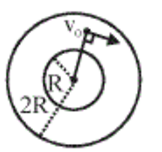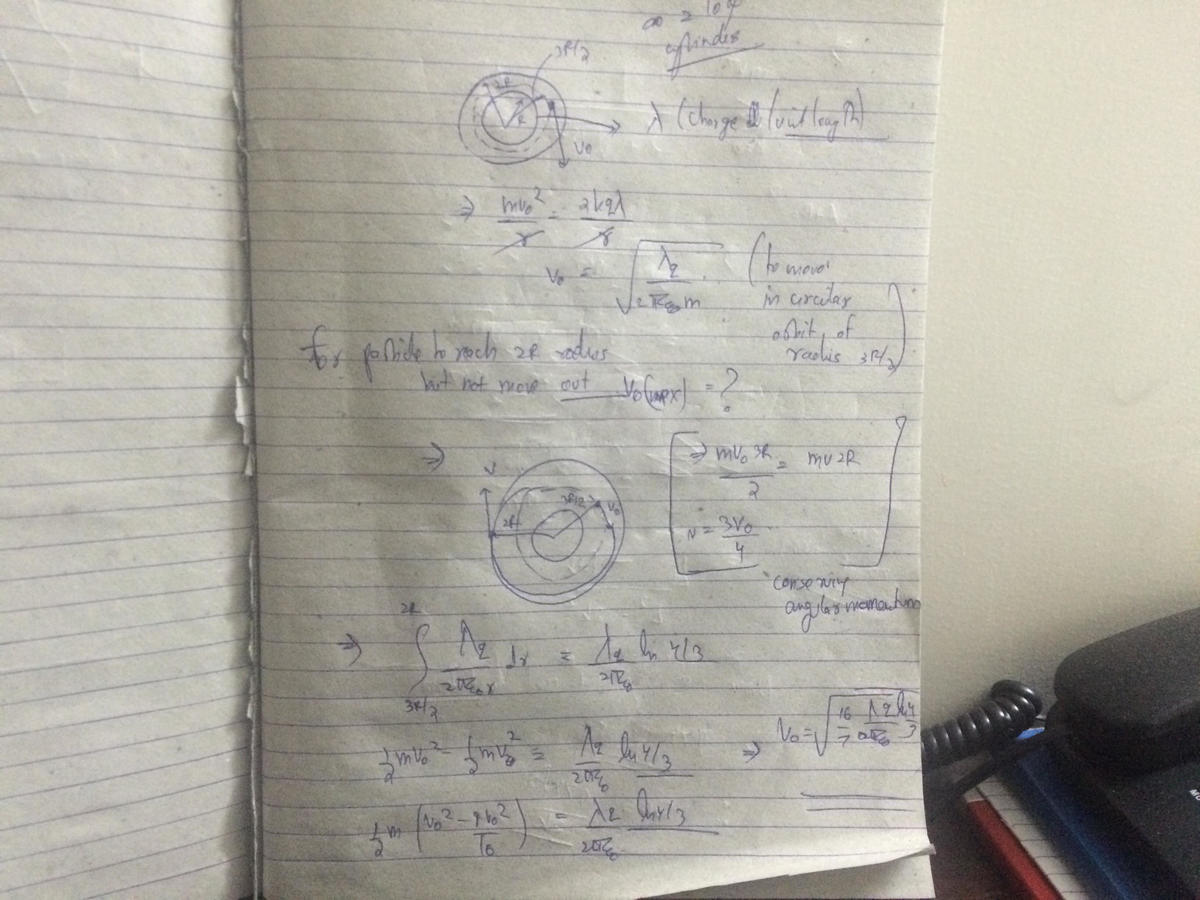charged particle stuck in between two concentric charged cylinders

Two long concentric conducting cylinders with cross section as shown in the figure above, have radii R and 2 R . The inner one carries a charge λ per unit length. A particle of mass m and negative charge − q is given velocity v 0 perpendicular to axis of cylinders and perpendicular to radial direction at a distance 2 3 R from the common axis of cylinders. Identify which of the following statements is/are correct.
(A) If the velocity is v 0 = 2 π ϵ 0 m q λ , then the particular moves in a circular path.
(B) If the velocity is v 0 = 4 π ϵ 0 m q λ , then the particular moves in a circular path.
(C) If the maximum velocity of v 0 such that it does not touch the outer cylinder is v 0 = 7 1 6 ⋅ π ϵ 0 m q λ ln ( 3 4 ) .
(D) If the maximum velocity of v 0 such that it does not touch the outer cylinder is v 0 = 2 π ϵ 0 m q λ ( 1 + 2 ln ( 3 4 ) ) .
This section requires Javascript.
You are seeing this because something didn't load right. We suggest you, (a) try
refreshing the page, (b) enabling javascript if it is disabled on your browser and,
finally, (c)
loading the
non-javascript version of this page
. We're sorry about the hassle.
1 solution

How many pages u tear?
Log in to reply
That was all the waste pages for math calculation
One could alternatively finish the first part by Gauss Law And notice the field exactly mimics that of an infinite wire of charge density Lambda For the 2nd part The particle just does not touch the outer cylinder Implying it is tangent to the 2nd cylinder And at the point of tangency,any charge redistribution due to the induced charges on outer cylinder are neglected Thus electric force being central allows for conservation of angular momentum Further Notice that the field,E inside the Gauss Law expression is due to all intrinsic and extraneous charges (the charges developed) on the outer cylinder have no net effect at all on the Electric field E Cute problem overall